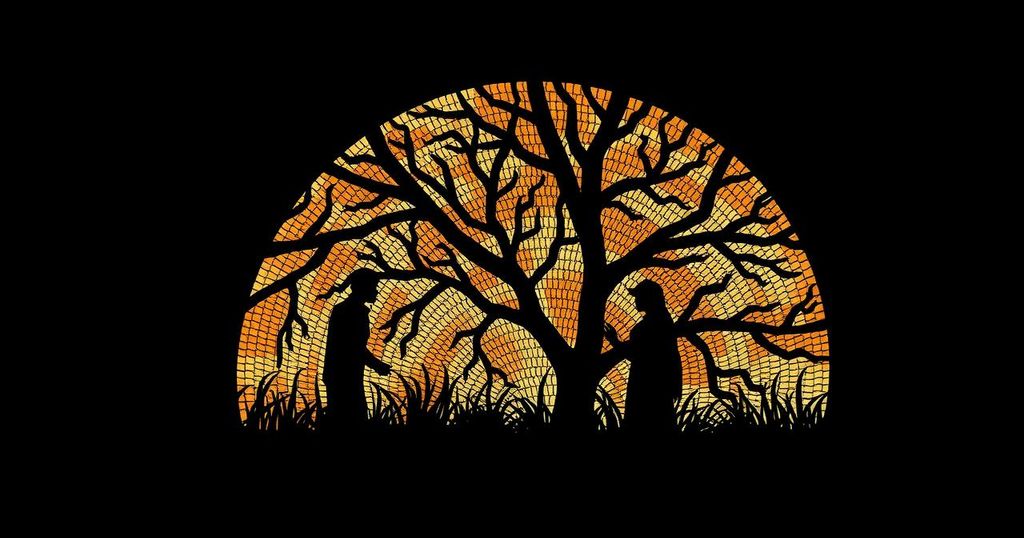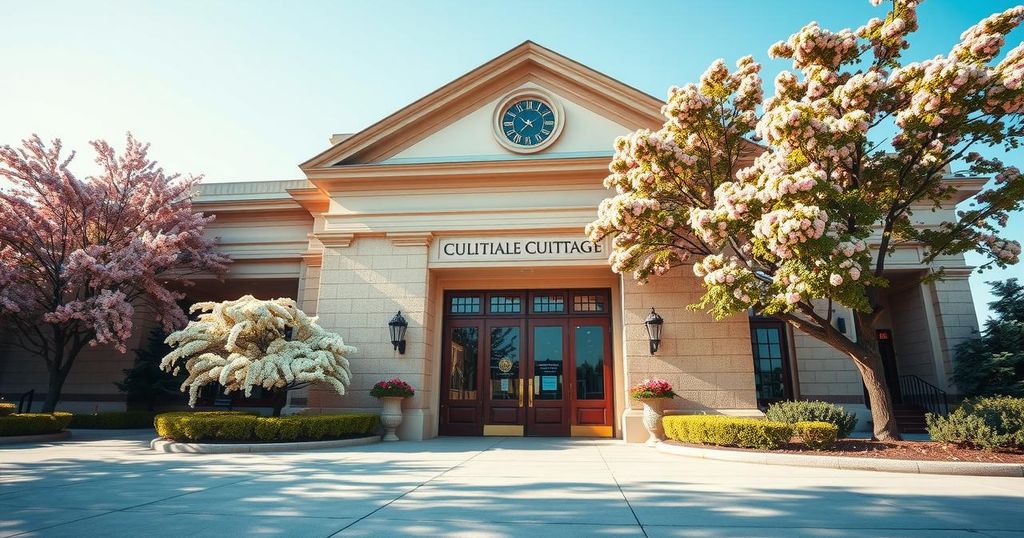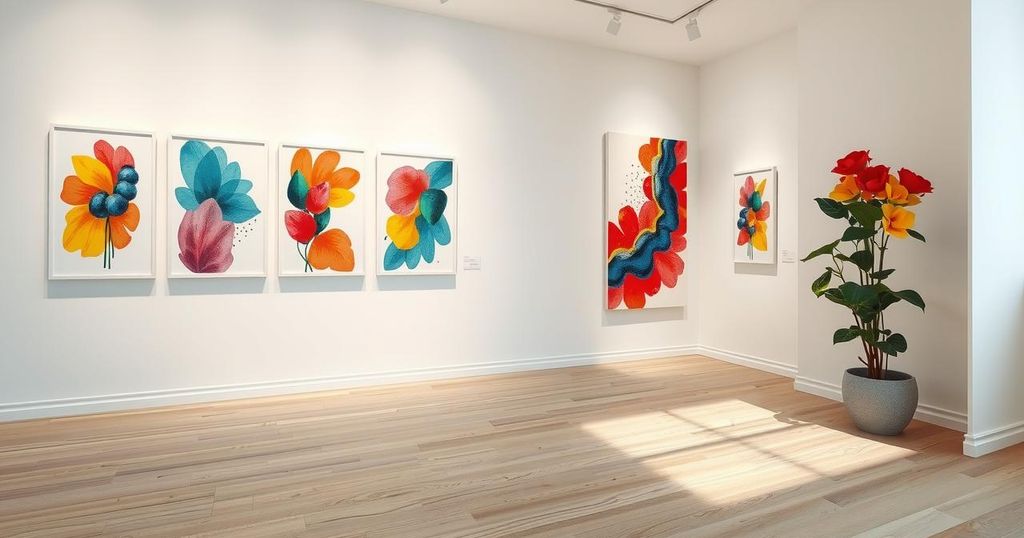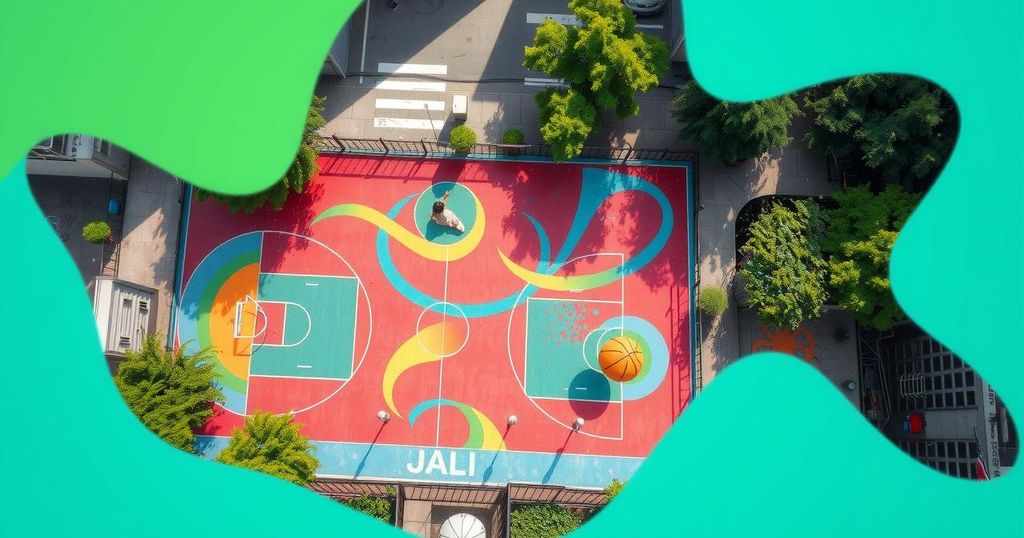Reimagining Tradition: Jeremy Frey’s Journey in Basket Weaving
In a striking fusion of tradition and modernity, artist Jeremy Frey revitalizes the Native American art of basket weaving while navigating personal and cultural legacies. His exhibition, “Woven,” showcases his innovative creations at the Portland Museum of Art, intertwining his journey of renewal with the challenges faced by the craft, particularly the threat of the emerald ash borer. Through his art, Frey honors both his heritage and the environment, emphasizing the importance of preserving this ancient practice in contemporary society.
In a quiet corner of Maine, where the whispering trees intertwine with Native heritage, the ancient art of basket weaving reaches towards contemporary horizons, guided by the hands of artist Jeremy Frey. With each step through the forest, Frey searches for perfect brown ash trees—the roots of a tradition that echoes through time, captivating today’s art scene. His journey into the woods is imbued with purpose. He knows that these trees, graceful and knot-free, will one day transform into intricate baskets that embody both artistry and ancestral wisdom. Frey’s work is currently spotlighted in a major exhibition at the Portland Museum of Art titled “Woven,” which showcases his vibrant, innovative designs that blend traditional techniques with modern artistry. For over two decades, Frey has dedicated himself to this craft, creating baskets that vary in size, shape, and color, with refined details that include double-walled designs and hidden bursts of color—a secret woven just for him. “I have this duality going. I want to exist as a contemporary artist, but I also have a Native side to me that is always going to be present,” Frey shares, showcasing his journey as both a Native artist and a modern creator. His ancestry connects him to generations of basket weavers, yet his perspective is unique, filled with a desire to express individual artistry while respecting traditions with profound significance. Frey’s path to basket weaving was born from a personal quest for renewal, a response to life’s challenges and turbulent past. As he meticulously pounded, scraped, and weaved, he not only created beautiful pieces but also began to reshape his life. “I think the act of weaving kind of helped save my life,” he reflects. Each basket he creates is not simply a vessel; it carries stories of struggle, resilience, and heritage. His dedication to sourcing materials connects him spiritually to the land. He harvests every element himself, embodying a tradition that emphasizes both respect for nature and the importance of quality in craftsmanship. He learned from elders within the Maine Indian Basketmakers Alliance and grew into the spotlight, earning accolades and the admiration of major art institutions that recognize the intricate relationship between art and craft. Yet, as he gathers his materials, a looming threat hangs in the air. The emerald ash borer, an invasive species, threatens the very trees that form the backbone of his creations. As he crafts pieces that bridge the gap between past and present, he also faces the reality of a future with dwindling resources. “As what I’m doing as an artist peaks, I’m going to lose the material to actually do it,” he laments, knowing that the essence of his art is entwined with the legacy of the ash tree. Riding waves of unexpected attention, Frey’s art continues to speak volumes, moving beyond traditional spaces into contemporary galleries where it can challenge perceptions and enrich the discourse of Native art. With his exhibition on the way to the Art Institute of Chicago this October, Frey stands at the intersection of heritage and innovation, shaped by the spirits of his ancestors, the whispers of the woodlands, and the vibrant pulse of contemporary culture. Weaving is more than a craft for Jeremy Frey—it’s a life force, an unfolding story, and a tribute to a lineage that thrives in the delicate threads of his art.
Basket weaving dates back centuries, particularly within Native American cultures where it is not only a practical craft but also a form of artistic expression. The tradition has been passed down through generations, carrying stories, culture, and identity. In recent years, contemporary artists have begun to reinterpret these ancient crafts, merging traditional techniques with modern aesthetics and contexts. This evolution draws attention to the ongoing relevance of such crafts in the art world, while simultaneously addressing pressing issues like environmental challenges affecting the materials used in these time-honored creations.
Jeremy Frey’s innovative approach to basket weaving intertwines his personal journey of resilience with the deep roots of Native American culture. As his work captures the spirit of both tradition and contemporary art, it reflects not only an artistic legacy but also raises awareness of the environmental challenges threatening this ancient craft. Frey embodies the balance of heritage with innovation, a testament to the enduring power of art and tradition in an ever-evolving world.
Original Source: www.pbs.org




Post Comment